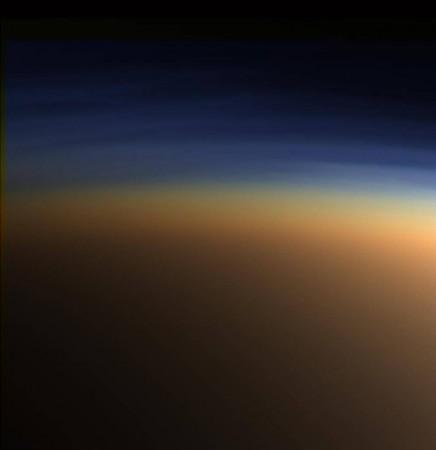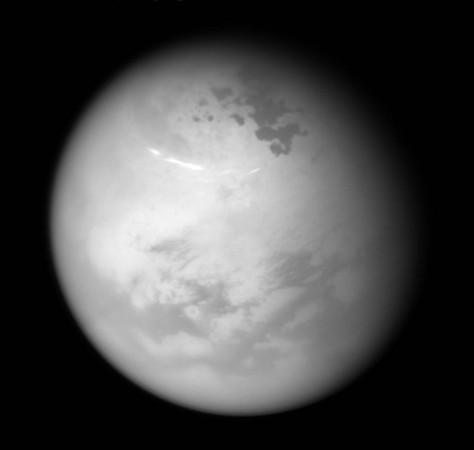
NASA's Cassini-Huygens mission has led to the discovery of a molecule which helps in the production of complex organics in the hazy atmosphere of Saturn's largest moon Titan.
ALSO READ: NASA's WISE telescope makes new revelations about massive distant comets
The icy moon possesses a thick atmosphere comprising of nitrogen and methane along with some of the most complex chemistry observed in our Solar System. Researchers also think that Titan's atmosphere imitates the atmosphere of early Earth before the oxygen build up.
Titan can also be considered as a planet-scale laboratory that can be analysed to understand the chemical reactions which led to life on Earth, this phenomenon is likely to be taking place on planets revolving around other stars.

It has been found that methane and nitrogen present in the upper atmosphere of Titan are exposed to the energetic particles present in Saturn's magnetosphere and sunlight's energy. These sources of energies react with hydrogen, nitrogen and carbon and result in creating more complicated pre-biotic compounds.
These large molecules glide down towards the lower atmosphere and form a thick cloud of organic aerosols, these are believed to reach the surface of the moon eventually. It is hard to understand the conversion of simple molecules in the upper atmosphere to complex organic haze in the lower altitudes.
The Cassini mission led to the surprising finding of a particular type of molecule at Titan which is negatively charged, known as anions. The research didn't expect to discover this type of molecule as they are highly reactive and should not last long in Titan's atmosphere before combining with other materials. Their detection is completely reshaping current understanding of the hazy moon's atmosphere, a statement by ESA revealed.
According to a new research published in Astrophysical Journal Letters, scientists detected some of the negatively charged species -- carbon chain anions. These linear molecules are known to be the building blocks towards more complex molecules. These are also estimated to have acted as the basis for the earliest life forms on Earth.
The detections were made with the help of Cassini's plasma spectrometer called CAPS while the spacecraft flew through the upper atmosphere of Titan, around 950–1300 km above its surface. The carbon chains were found to be lesser closer to the moon while precursors to larger aerosol molecules underwent rapid growth, suggesting a close relationship between the two, with the chains 'seeding' the larger molecules.
"We have made the first unambiguous identification of carbon chain anions in a planet-like atmosphere, which we believe is a vital stepping-stone in the production line of growing bigger, and more complex organic molecules, such as the moon's large haze particles," says Ravi Desai of University College London and lead author of the study.
"This is a known process in the interstellar medium, but now we've seen it in a completely different environment, meaning it could represent a universal process for producing complex organic molecules. The question is, could it also be happening within other nitrogen-methane atmospheres like at Pluto or Triton, or at exoplanets with similar properties?" Desai concluded.

















